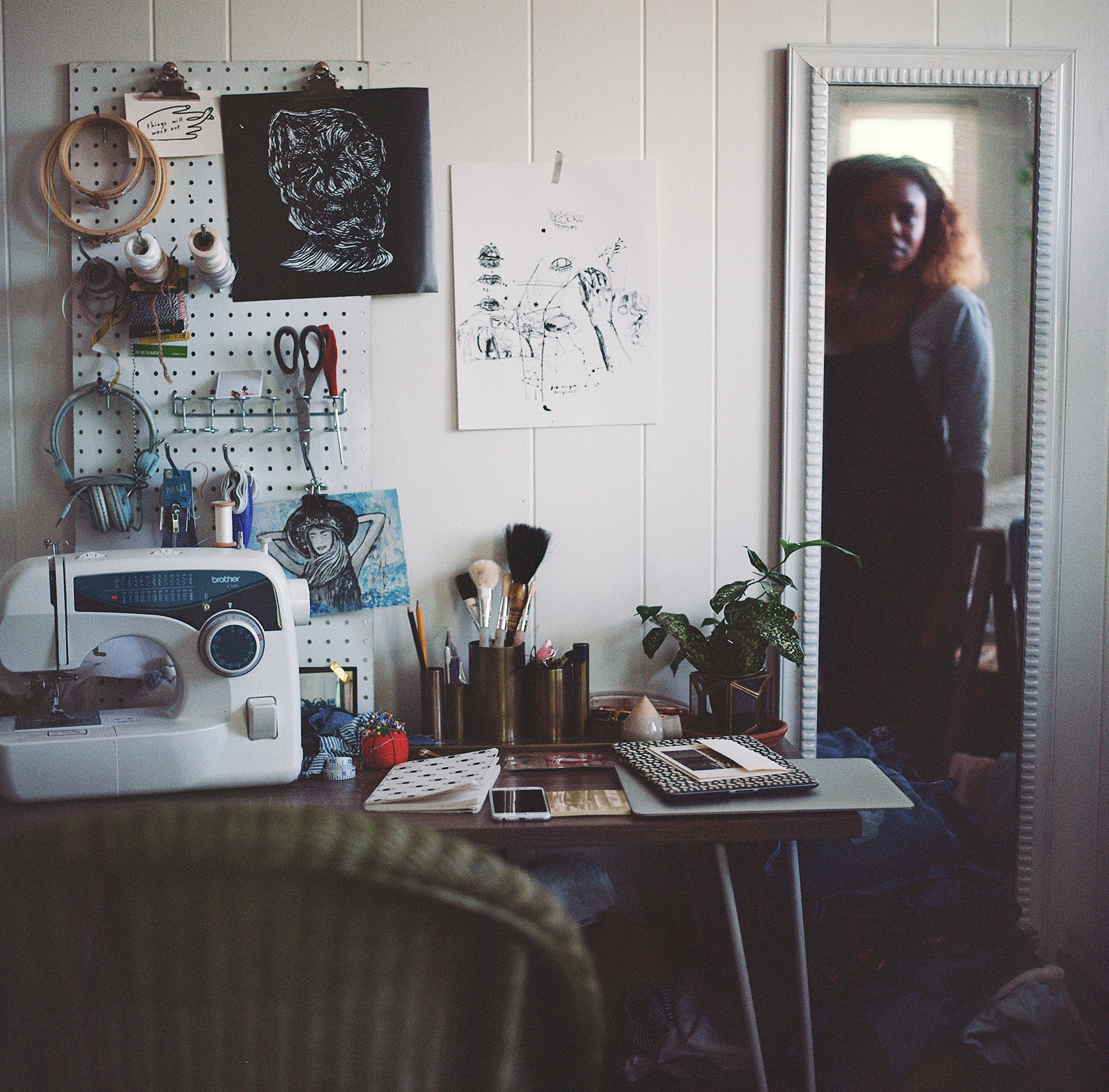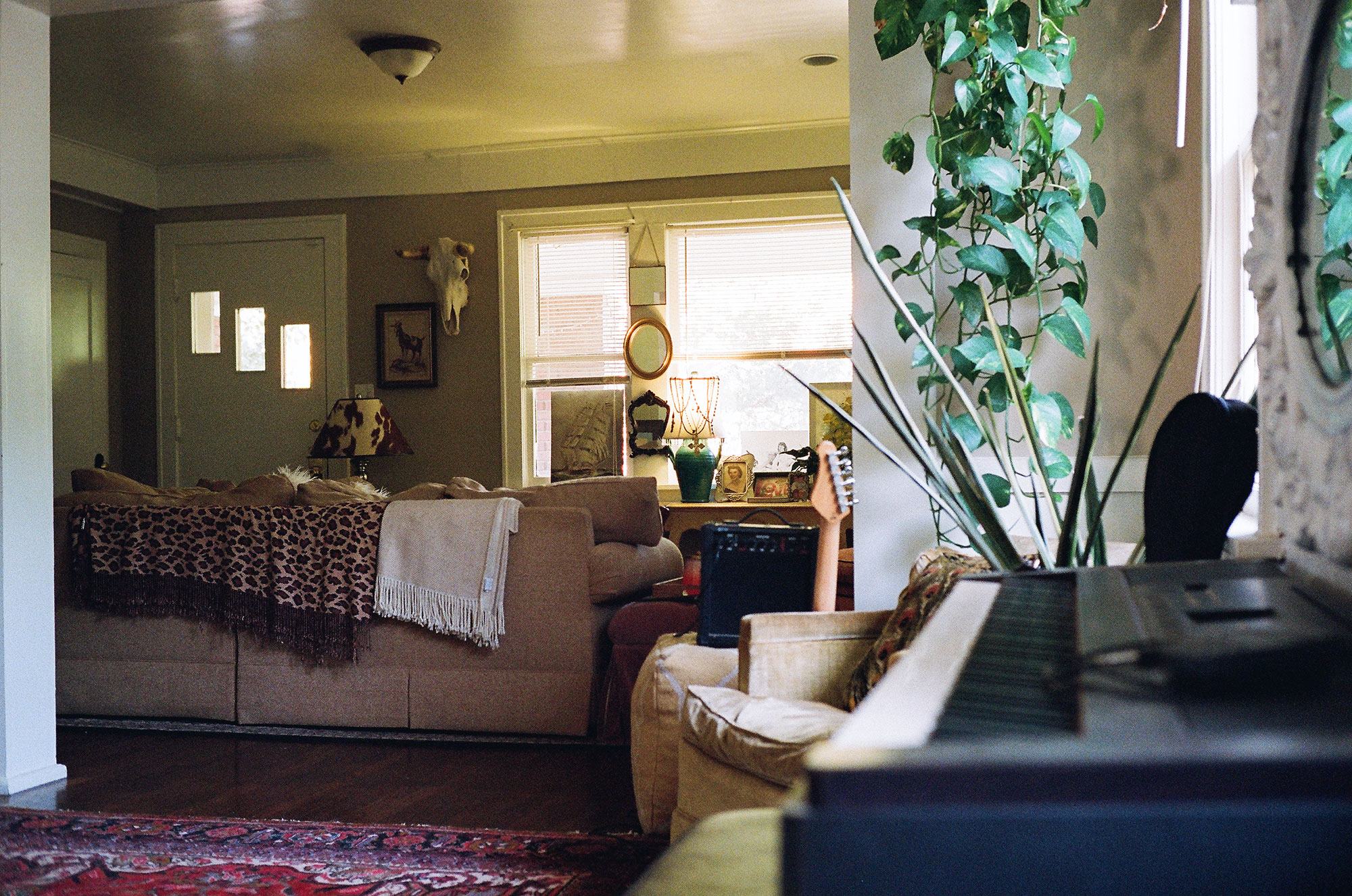Sarah Nsikak
Heritage Hills



“I would say to young people a number of things. Let them remember that there is a meaning beyond absurdity. Let them be sure that every little deed counts, that every word has power, and that we can do — every one — our share to redeem the world despite of all absurdities and all the frustration and all disappointments. And above all, remember that the meaning of life is to live life as it if were a work of art. You’re not a machine. When you are young, start working on this great work of art called your own existence.”
- Rabbi Abraham Joshua Heschel
I’ve seen the future of Oklahoma City. And it looks like a twenty-five year old young black woman. Simple, elegant, intrinsically beautiful, every-so-gently strong. A first generation Nigerian American. The daughter of an immigrant mother whose American dream got its start working at McDonald’s who then went onto become the CEO of her own company, employing the very same kind of people who had discriminated against her. A young well-educated woman, hardworking and driven to success, now following in her mother’s entrepreneurial footsteps, accepting the responsibility, with a noticeable degree of humility and trepidation, to be the “bearer of risks” for the next generation. An artist, creative, and maker; a lover of textiles, design, and fashion.
As I sit next to Sarah Nsikak, the future comes close. It bursts forth and breaks through. Here it comes. She’s crashing through another glass ceiling:

“That a young black woman in this town can be seen and accepted as a professionally credible fashion designer and not just another easily dismissed hobbyist is deeply encouraging. Not too long ago I was planning and preparing to move elsewhere to find increased diversity and the acceptance that I suspected would be sorely lacking. But I have been more encouraged than ever. There’s a real curiosity in my work that I didn’t expect, and it’s being deemed valuable - more than just a novelty or pet project. I now feel a healthy sense of responsibility to stay and do what has not yet been done, right here and right now.”
You can already sense, can’t you, that element of activism that accompanies so many who possess the true spirit of an artist? They stand in the tension-filled middle of the present-day with their eyes wide open and fully aware of the painful realities of the past yet maintain a hopeful heart set on ushering in the preferred future. I’ve longheld the words of Anglican Bishop N.T. Wright as cherished and true: “Art is love creating the new world and justice is love rolling up its sleeves to heal the old one.”
Her comments are charged with a tempered emotion, loaded with a kind of dignity and honor that has been passed down through the ages. You get the impression she isn’t just speaking of her own personal experience or the secondhand perspective of her own mother, but that of countless others who have come before. As she talks about what it means to be a “young black woman in this town” you can feel, like a wrecking ball, the destructive force that race and racism has wrought on us all. As she joins her voice with the countless others who are quite literally marching in the streets these days declaring afresh and anew that Black Lives Matter, you are invited to tune your ear to the cries of the oppressed. And as you listen to the stories of their lives and get swept away in the bluesy rhythm of their song your heart is moved and pained by the realization that we have turned a deaf ear and shut our not so color blind eyes to their plyte.

“We don’t live in a post-racial society, but for the longest time we have pretended that we do. We hurried through our past history that was marked with systematic oppression and indiscriminate cruelty to our fellow mankind. We swept mountainous offenses and filth under the rug and washed our hands of the responsibility, denying its debilitating long term effect.
“Well, the cover is being pulled back, isn’t it? The issues and realities of race and racism in this country are being exposed all over again in real time right before our very eyes. We are being confronted with the reality that race still divides humanity; forced to acknowledge that a collective implicit racial bias is rearing its ugly head in increasingly explicit ways. We are more sick and torn than we’d like to admit, not nearly as healthy and whole as we have pretended to be.”
But it’s certainly not all doom and gloom. And nothing has ever been accomplished by cursing the darkness. Instead we light a candle of hope and point out the good in mankind even if it is still now just a flicker.

As I broach the subject of “White Privilege”, more keenly aware than ever of its presence in my own heart and life, she doesn’t pile on with heaps of guilt and shame: “I’m encouraged to see people of privilege in places of power using their influence in a more uplifting way, asserting themselves on behalf of others in ways not seen in years.”
I think Sarah’s grace and understanding stems from her upbringing as a “Third Culture Kid.” Her black africanness was something to be tampered down and kept under control. For her mother knew that to succeed and thrive in mid-western American society they must assimilate into the unmistakingly dominant white majority culture.
With grief in her voice she says: “I didn’t get taught the language of my own Nigerian heritage for fear that I wouldn’t be thoroughly americanized enough to succeed in this society and culture. I needed to find a way to look, sound, and act the part. To somehow sideline that which was so central to me. How do I stop being me? Must I cease to be? It creates a bit of an existential crisis when your very nature is deemed a threat, something to be stifled, and all but snuffed out. As a result, I didn’t have a ‘tribe’ growing up. Didn’t know my place in this world. As is often the case, I was neither black nor white enough to fit in with either group.”


It’s beautifully redemptive, however, to witness the tradition and heritage that was suppressed for so many years now resurface as part of the impetus and inspiration for Sarah’s love of fashion and design. I ask her how clothing became her artistic medium of choice:
“My Grandmother, her name was Hannah, was a seamstress in Nigeria. I have always felt connected to clothing and textile; it was somehow, pardon the pun, woven in and through me. For me, fashion isn’t necessarily about making a statement per se, but rather expressing your point of view. What you are wearing says something about who you are and what you want. Humans are uniquely made and each one carries an identity that is all their own. The art of self expression is shown by every one of us in the subtleties, like the way we dress ourselves daily. The odds and ends of the way we present ourselves are the beginning of creative expression.”
To that end, I ask her to tell me about what she’s wearing on this particular day: “I’m wearing a handmade dress that is ultimately nothing more than a tshirt and a pair of boots which come together to exude, if not scream: Comfort, sustainability, function. Part of my motivation for the use of materials in my design is to reverse the waste that is so prevalent in the fashion industry. Because I love clothes and personal style as much as I do, I wanted to create something that was a part of the solution and not add to the problem. All of my pieces are either what I’d call vintage up-cycled items or they are made from recycled materials.”
Herein lies a value statement and manifesto of sorts. And it’s not necessarily about clothing at all. Or maybe it has everything to do with clothing, but not in the shallow, superficial and skindeep way we’ve been conditioned to think about it. What she’s making is a hearty declaration about who we are and how we ought to be in the world - stewards of God’s great earth.
If beauty is in the eye of the beholder, then I want to know what she sees: “To me, beauty in fashion is found when something raw and undone is juxtaposed with a more structured piece. Take denim for example, which you know if you’ve seen any of my designs is my favorite and most used material and here’s why: it best and most thoroughly tells the story of wear over time. It has a history. Denim not only tells its own story, but that of the wearer too.”

My curiosity was piqued. Tell me about your clothingline, Stone + Harper. Where does the name come from?
“It’s two women’s last name: Lucy Stone and Frances Harper - a white woman and black woman who stood together to dismantle injustices during a time when economic successes conveniently deflected attention from the devastating social disparities plaguing our country. In this time, slavery, sexism, racism, and many other social injustices were very much the norm. Stone and Harper, in a time so immersed in racism and discrimination, found solidarity in something bigger than themselves. They worked together to fight for social justice we now take for granted every day.”
I honestly, didn’t know where to take it from there. I’m sure my jaw dropped followed by one of those grins and head shakes that says, “I shouldn’t have been surprised.” Why was I expecting a trendy and trite response? There is so much meaning packed into those two words “Stone” and “Harper”. It makes perfect sense and I’m moved beyond belief: it’s about fashion and so much more than fashion. Here you have a humble and passionate “young black woman” who has a fire deep within her bones. Her countenance so, so, very bright. And without saying a word, she’s saying “come watch me burn; let’s light the world up; what do say?!”

As we part ways, her smile cracks wide the universe once more, and she raises her right hand, in the very same way that a revolutionary female figure of the sixties might have done uttering “power to the people” demanding equal rights for all. She he marries this gesture of raw strength with one of tenderness as she crosses her first two fingers as an innocent child might do as they make a wish, tucking one finger behind the other, pressing them together as a sign of hope - a sign of hope for you and for me and for all of us - that we might be one, that all shall be well, that wrongs might be righted, that injustice would be no more, that we all might be free to be all that we could ever dream to be. ⊙
With the urban revitalization of downtown OKC came the resurgence of the coveted Heritage Hills Historic Preservation District. Today, Heritage Hills is home to prestigious city leaders and young families alike – just as it was at its inception. Immaculate tree-lined sidewalks and irreplaceable historic spaces offer a quality of life that comes only with dazzling architecture and fascinating history. The neighboor is a feeder for Wilson Arts Integration Elementary School. A historic Heritage Hills estate can be found from about $300k to $2.0 million or more.
